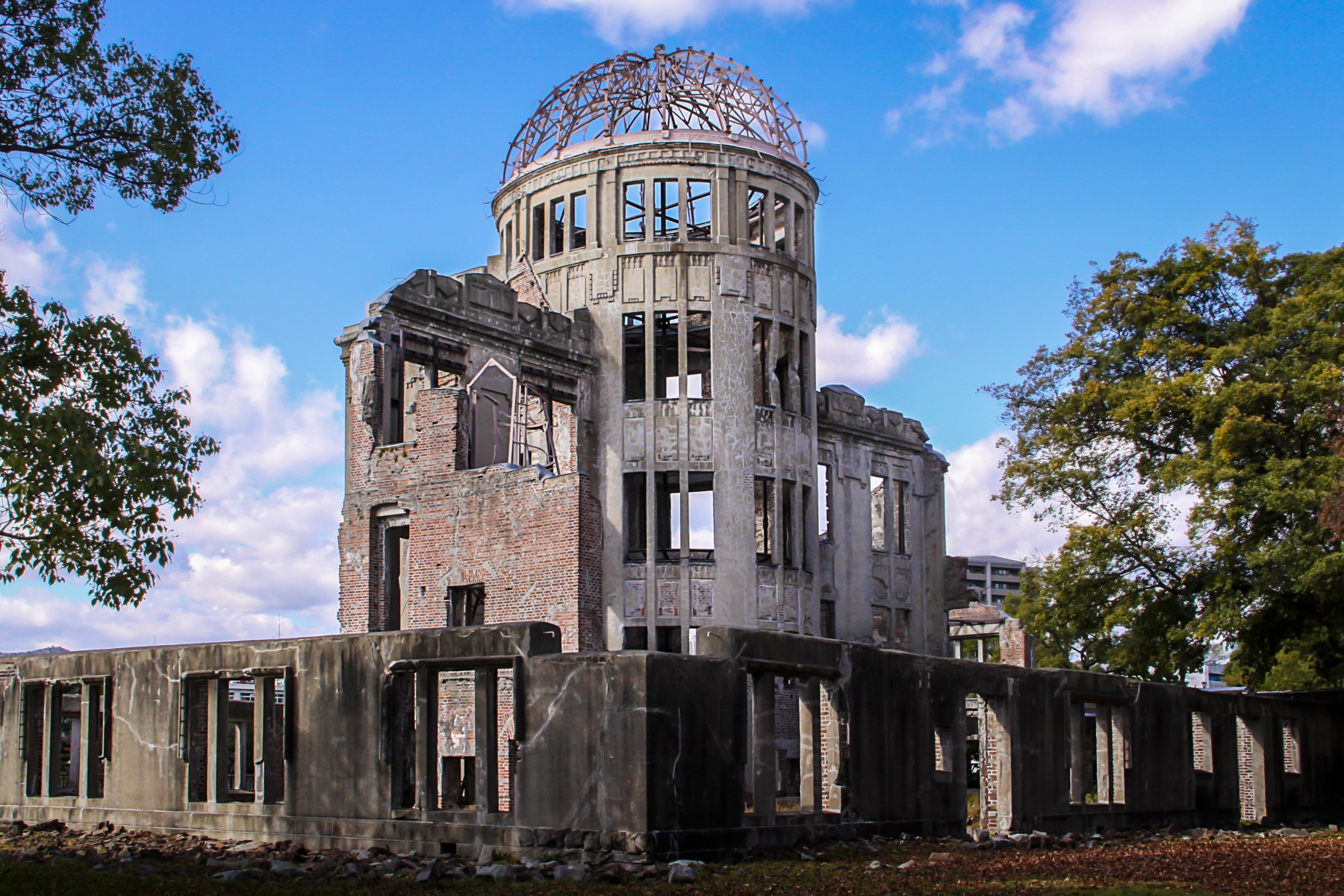
Hiroshima – City of Peace
Kyoto has the most beautiful temples, and Tokyo has the Ginza. Yokohama has the walk by the bay, and Sapporo has the snow festival. However, Hiroshima for me is the most beautiful city in Japan. Walking the streets of this city and crossing bridges over its five rivers is an experience that is unmatched. The tranquility of the city stands in stark contrast to the violence of its modern birth. This experience is only compounded by realizing that as an American, your country and Japan shared the most violent exchange that any two nations in the world have ever encountered. The carnage and depth of destruction resulting from the war stands in stark contrast to the bond of fellowship that links our countries today.
The Commercial Museum of Hiroshima taken before and after the bombing. It is now called the Atomic Dome Memorial.
The centerpiece of the city is the Atomic Bomb Dome on the Aioi River. The shell of this building that survived that fateful day seventy years ago on August 6, 1945 marks the beginning of the Peace Park. The Dome’s crumbling walls may need some support now, but its austere beauty symbolizes both a reminder of the past and the promise of the city’s future.
Across the bridge of the Dome is the entrance to Hiroshima’s Memorial Peace Park. It is filled with people from all over the world, yet everyone walks with respect in this tranquil setting. After walking for a Few quiet minutes, you come upon the Children’s Peace Monument built in memory of the children who perished that fateful day in August. One young girl, Sadako Sasaki, stands as their representative as well as a symbol of hope and love for us all. Sadako is the Anne Frank of Japan.

Statue of Sadako near the site of her school
Sadako was a little two year old girl when she was blown out of her bedroom window as the bomb struck. Her home was only two kilometers from the blast center, and even though most of her neighbors perished, she survived. Her brother, Ejii, took Sakako to the river for protection from the fire as the “black rain” fell upon them. However, about ten years later as a student in middle school she developed leukemia, which then was called the A-Bomb disease.
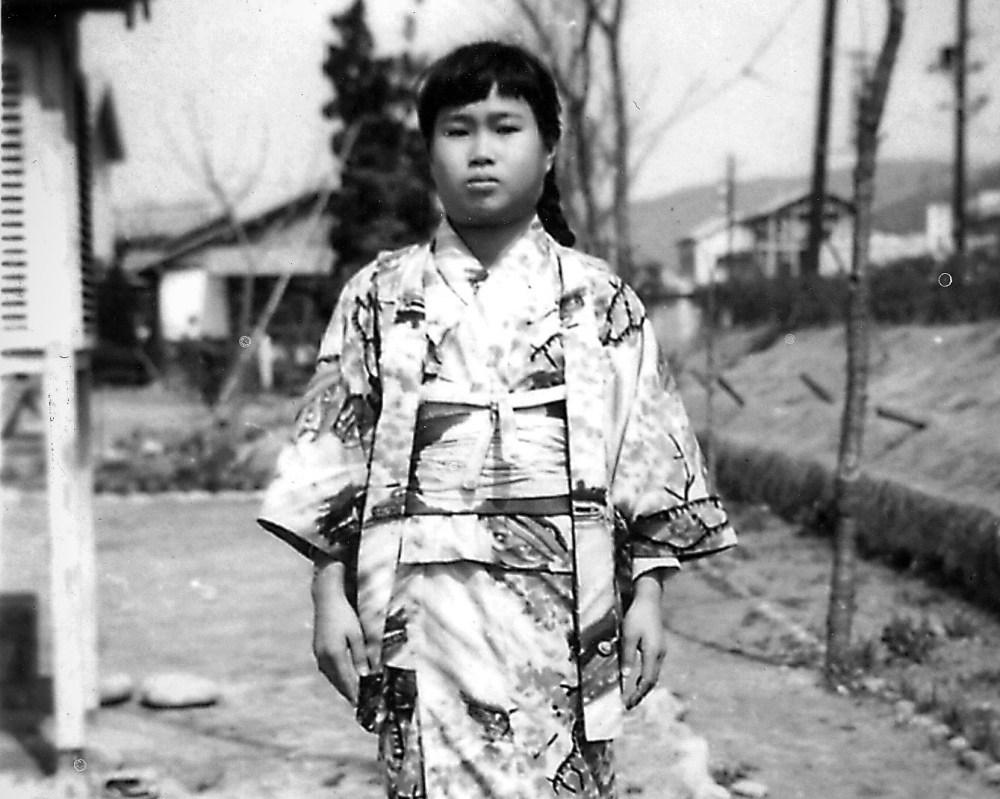
Sadako at a school party six months before she passed away.
While in the hospital, one of her classmates, Chizuko, told Sadako about the Japanese legend of the sacred bird of Japan, the crane. She said that if one folded a thousand paper cranes, the crane would make your wish would come true. Sadako began folding her cranes on whatever paper she could find. She tried her best, but died several hundred cranes short of the one thousand goal. Her classmates immediately began to make up the difference, and folded the additional 367 cranes .
As Sadako departed this world, her mother said softly, “Oh flock of heavenly cranes, cover my child with your wings.” Sadako died on October 25, 1955.and she was buried with her thousand cranes.
 Three years after she passed away, the Children’s Peace Monument in Hiroshima was dedicated in her honor. Ejii, who managed to save five of Sadako’s original cranes, pulled the red and white covering off her statue as the bell tolled. The bell was engraved on one side with the words, “A Thousand Cranes,” and on the other was, “Peace on Earth and in Heaven.” Ejii later gave one of the cranes to the Arizona Memorial saying, “And by placing one at Pearl Harbor, I hope it will lead to a true beginning of the end of the war between Japan and the U.S.”
Three years after she passed away, the Children’s Peace Monument in Hiroshima was dedicated in her honor. Ejii, who managed to save five of Sadako’s original cranes, pulled the red and white covering off her statue as the bell tolled. The bell was engraved on one side with the words, “A Thousand Cranes,” and on the other was, “Peace on Earth and in Heaven.” Ejii later gave one of the cranes to the Arizona Memorial saying, “And by placing one at Pearl Harbor, I hope it will lead to a true beginning of the end of the war between Japan and the U.S.”
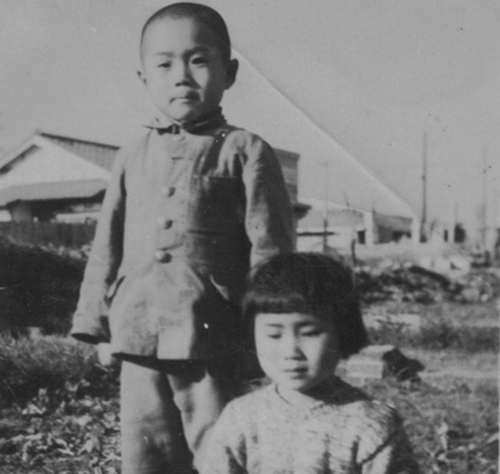
Sadako and her Broher, Ejii
Each year young children from all over Japan fold about 10 million cranes and bring them to the park to honor her and the other young children who died on that historic day. A modern statue of Sadako is the centerpiece of the monument, and the wall behind it is replenished daily with new paper cranes brought by children from all over the world.
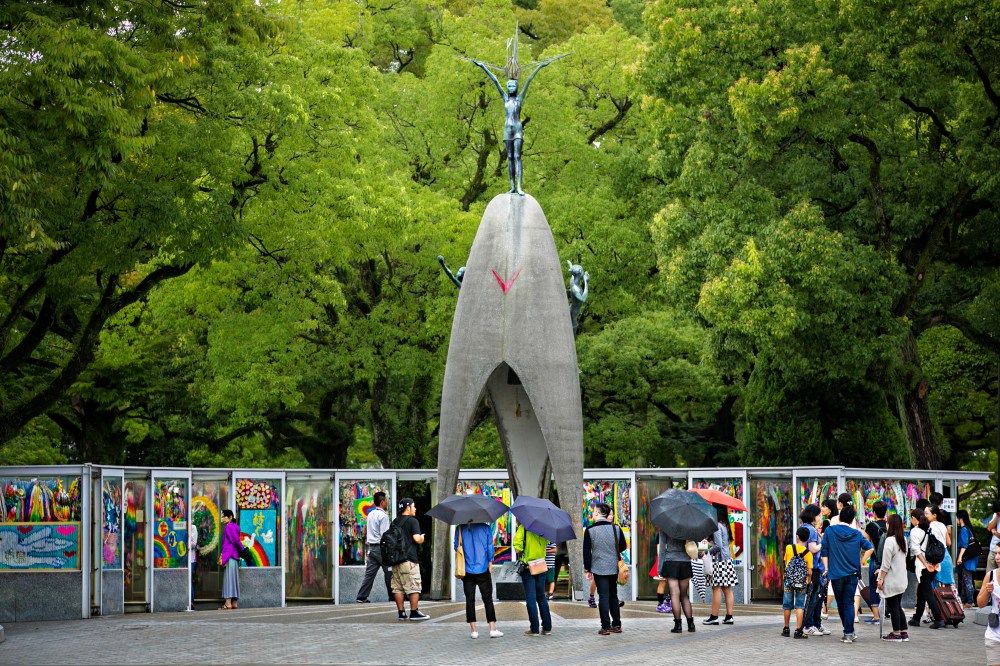
The Children’s Memorial
As you continue your walk through the park, you see the Cenotaph of Hiroshima. A cenotaph is a memorial to the dead who are physically buried somewhere else. At the base of Hiroshima’s cenotaph is a stone vault containing the names of all who died as a result of the bombing.
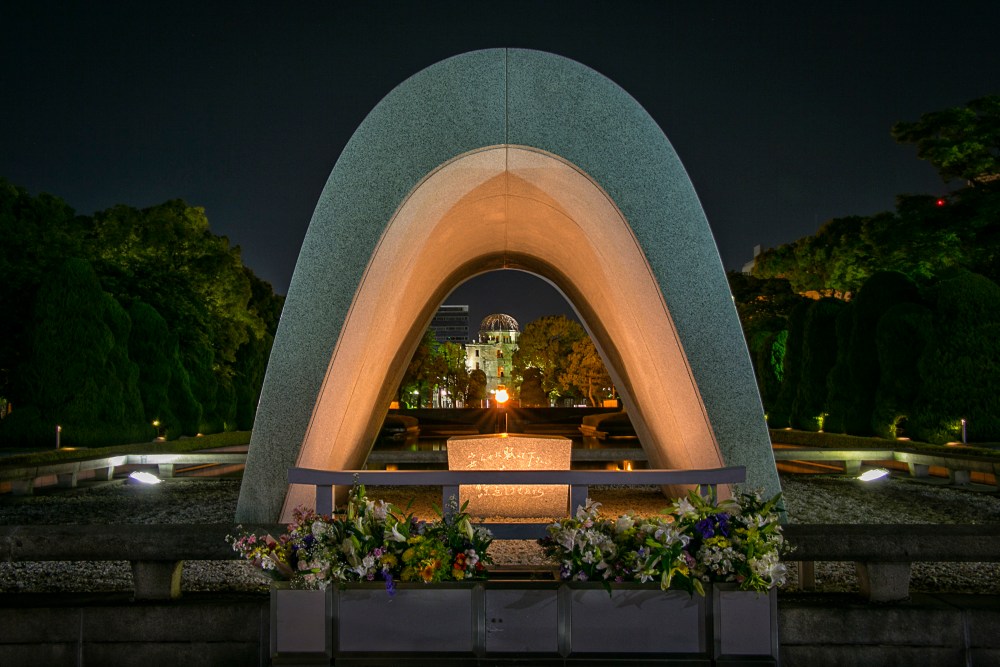
This cenotaph was designed in 1952 by Tokyo University professor Tange Kenzo in the geometric shape of a hyperbolic paraboloid. At the granite monument’s base is a vault containing the names of all who died, and its curves serve to protect these souls from the rain. On the monument is inscribed the epitaph:
“Let all the souls here rest in peace; For we shall not repeat the evil.”
The official name of the monument is “Memorial Monument for Hiroshima, City of Peace.”
Shukkei-en Garden
One of my two favorite Japanese gardens in all of japan is located in Hiroshima. Shukkei-en Garden’s beauty and simplicity is only surpassed by its historical significance. After the bombing it served as central gathering place for many of the survivors. It became their outdoor home until new structures could be built.
The Beauty of Shukkei-en Garden, then and now
Hiroshima Today
As if the past never happened
The Savior of Kyoto
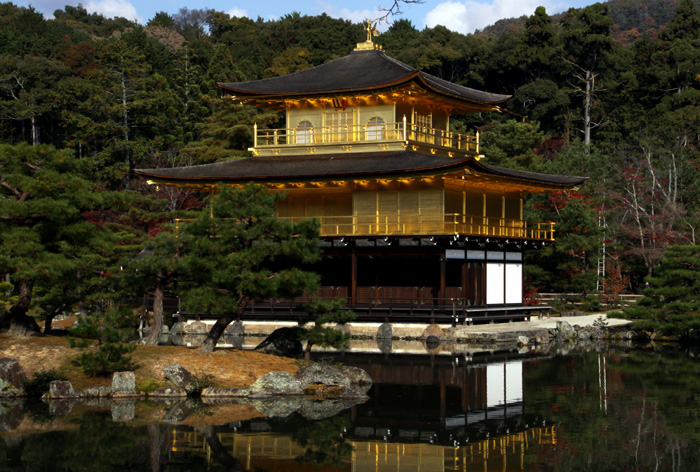
Kinkaku-ji , The Golden Pavilion of Kyoto
Just weeks prior to the bombing of Nagasaki, the city of Nagasaki was not even on the list of cities to be bombed. The city that was on the top of the list was Kyoto. It was Secretary of War Henry Stimson who ordered Kyoto to be removed from the target list. He knew that Kyoto was basically the soul of Japan, and that the Japanese would never be able to forget nor forgive the US if Kyoto was destroyed.
He presented his argument to President Truman and wrote about it in his dairy. Simpson wrote, “He was particularly emphatic in agreeing with my suggestion that if elimination was not done, the bitterness which would be caused by such a wanton act might make it impossible during the long post-war period to reconcile the Japanese to us in that area rather than to the Russians”.
However, the decision of Simpson was far more personal than his argument suggested. While he was governor of the Philippines in the 20’s, he had many occasions to visit Kyoto. It is also believed that Stanton spent his honeymoon in Kyoto. Simpson, like most visitors to Kyoto, fell in love with the city.
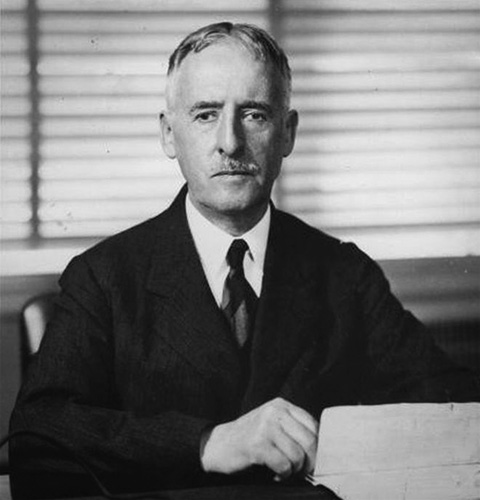
Secretary of War Henry Stimson
It is imperative to note that Secretary Stanton is a controversial figure in that he was very much in favor of the internment camps for the Japanese during the war. He wrote, “Their racial characteristics are such that we cannot understand or trust even the citizen Japanese”. It is because of these views that historically the credit for saying Kyoto usually goes to American archaeologist and art historian Langdon Warner who urged not to bomb cities with cultural assets. There are even monuments to honor Mr. Warner in Kyoto and Kamakura, but the real savior of Kyoto was Secretary of War, Henry Stimson.
~ Postscript ~
Finally all the photos above were taken by me except for the historic ones. I tried to find the photographers’ names to give them photo credit, but was unsuccessful. My decision was to, therefore, honor the famous military photographer of Nagasaki who just happens to be my “almost” namesake, Charles Levy. Lieutenant Levy was only 26 years old and using a 4×5 large format camera when he captured his famous “Mushroom Cloud” photo from the accompanying plane, The Great Artiste. The young lieutenant wrote this about the blast:
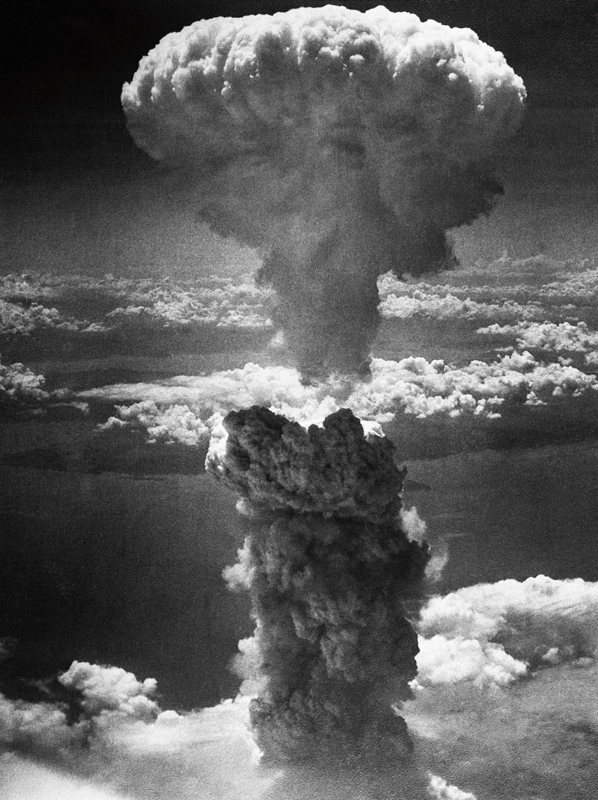
“Mushroom Cloud” by Charles Levy
‘We all grabbed our black welder goggles and slipped them on. Even though it was broad daylight, the flash could hurt your eyes. Then the flash came – sharp and brighter than double daylight itself inside our plane – and we ripped the goggles off again. We saw this big plume climbing up, up into the sky. It was purple, red, white, all colours – something like boiling coffee. It looked alive… we were all plenty scared.’
Charles Levy died in 1997, but his iconic photo of the magnitude of the destruction remains today.
Nagasaki, then and now
The Half-Torii Gate of Nagasaki, then and now
Bibliography: Over the summer I purchased a great little children’s book by Eleanor Coerr about Sadako. I must admit I cried most of the way through it. I highly recommend it for your young students..
 charles levie
charles levie



















This is an amazing site thank you for sharing
Charles, That was wonderful!! Thanks for sharing.
Love you, Cathy
Beautiful job, Charles!
Impressive photo journalistic lesson Charlie. Hopefully Sadako’s memory helps us fulfill the epitat that “…we never repeat this evil again” Thanks for sharing!
Beautiful and heartfelt, Charles!
My reaction to your fabulous photography is paradoxical: the most horrifying massacre in human history is somehow beautifully displayed.
Nothing less than a superior job by an incredible artist!
Always beautiful. Charles.A very emotion journey. You have such a great tallent.
I think this is a fantastic presentation. I’m glad I was able to visit with you and share your experiences in Hiroshima!
Excellent work, Charlie. Thank you for sharing the artistry of your images and your words. All of my grandchildren will have a copy of Eleanor Coerr’s Sadako book to pass along to their children and grandchildren.
Charles, This is wonderful and powerful. As always you put your entire heart into your work. Thank you for compiling and sharing. Japan has so many parts to learn and enjoy. Again, Thank you and please continue sharing all of your passion and love. Evelyn